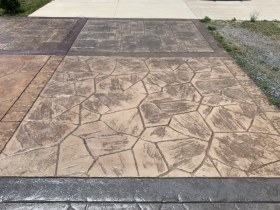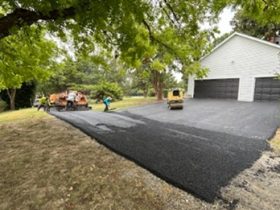Green landscaping is a cost-effective, energy-saving way to design, create, and maintain your landscape. Additionally, it gives form and functionality to your outdoor area. A green yard is more than just a green lawn.
We will explore some of the sustainable landscaping techniques. The suggested ideas are a great help for you in developing a backyard that is an entirely eco-friendly quick solution. They will green your yard in healthy, sustainable, and friendly ways
1. Responsible Use of Water
In areas with limited water resources, it is important to use less water. An easy way to save water is to use rainwater in your garden. You can install an efficient watering system for your garden. You can direct your downspouts toward your lawn or plant beds and let rainwater soak in. By using rainwater, you can use less water to keep your lawn healthy!
You should choose native plants. They thrive well in your local climate and soil. They need less water and maintenance once established. Consider using organic mulch in garden beds. It retains moisture, stops weeds, and regulates soil temperature. In this way, watering is reduced.
2. Native Plants
In green landscaping, plants play a key role. If you are thinking about what to plant, consider native plants. Some cultivars are derived from native plants (also known as “natives”). Native landscaping plants are well-adapted to your local environment. They will create a diverse and resilient landscape. They also support local ecosystems and help you save water by cutting the need for chemicals. When choosing natives, consult local experts to avoid invasive or aggressive species.
3. Chemicals Reduction
A key part of green landscaping is avoiding pollution from your gardening. Water, air, and wildlife will benefit from your actions. You should prefer less chemical fertilisers, pesticides, and herbicides.
First, check your soil. Chemicals may not be necessary! To provide nutrients to your soil, you can apply compost and mulch. In this way, you will enrich the quality of your garden and lawn soils. A healthy soil produces healthy plants.
You should avoid overfertilising with chemical fertilisers. They can run off into groundwater, adding to water pollution. You should never let your grass clippings or leaves in the street – they are a major cause of water pollution. Put the chopped grass and leaves back on the lawn. They’ll decompose and add nutrients.
You should apply fertiliser to your lawn during the fall and spring when the grass is at its best. Quick-release fertiliser is applied in fall, not spring. It is the most important because it helps the grass build reserves for the spring.
4. Permeable Surfaces
Using porous materials instead of concrete allows rainwater to soak into the soil. Thus, it maintains groundwater levels and prevents flooding. Permeable surfaces prevent erosion. They also reduce flooding and filter pollutants from runoff.
The use of permeable pavers, gravel, or porous pavement would make a landscape more sustainable. You can employ them for driveways, pathways, and patios. They lead to a functional and eco-friendly outdoor area.
5. Xeriscaping
Plants used in a xeriscaping project are drought-tolerant and slow-growing. This technique saves water and reduces yard trimmings. With the right design and plants, you can create a beautiful garden that requires little water. You can use this technique to make a stunning and water-efficient outdoor space. Select drought-resistant plants, efficient watering, and water-saving techniques. Consider xeriscaping principles when designing your landscape. Drought-resistant plants, native grasses, and succulents are great options. They require little watering once planted. Group plants with similar water needs together. Drip irrigation or soaker hoses are efficient irrigation methods. They deliver water right to the roots. In this way, you will reduce evaporation and runoff.
6. Pollinator Garden
A pollinator garden is a great way to protect endangered wildlife. It will be home to pollinators such as bees and butterflies. You should select plants that are rich in nectar and have beautiful flowers. Native and perennial flowers are suitable options. In this way, you will create a low-maintenance garden. It will draw many new pollinator friends to your home, no matter where you live. Not a fan of insects? You could also try birdscaping to attract various bird species to your garden.
7. Energy-Efficient Lighting
Think about investing in low-energy lighting for your outdoor space. You can choose from LEDs, solar lights, and low-voltage landscape lighting. These alternatives cut energy use and reduce pollution. There are motion sensors and timers that you can install on outdoor lights. You will cut unnecessary energy use and make sure lights are only on when needed. Position lights strategically to highlight key features. These include pathways, entryways, and garden beds. Do this while reducing glare. Also, avoid spilling light into nearby properties or habitats.
8. Sustainable Materials
You can select sustainable materials for hardscapes. Among the best choices are patios, decks, fences, and retaining walls. They minimise environmental impact and promote resource conservation. Use local, recycled, or reused materials whenever possible. Consider using reclaimed wood, recycled plastic, or natural stone. Look for green alternatives to traditional building materials. Permeable pavers made from reused materials, for example. You can also use composite decking made from wood fibres.
9. Rain Gardens
Rain gardens are used to collect rainwater. As a result, erosion is reduced. Creating a rain garden is a great concept. It reduces pollution and prevents flooding. Start by digging a shallow hole. Then, use water-loving plants that can handle heavy rains. Your rain garden should be in a low area of your yard. Water collects there during storms. Direct downspouts or runoff from impervious surfaces into the garden for most effectiveness.
10. Practices for Sustaining the Environment
To keep your yard eco-friendly and reduce environmental impact, consider these tips:
- Use mulch and compost. This practice enriches the soil and feeds your plants without chemicals.
- Implement Integrated Pest Management. Control pests and diseases naturally. Do this by hand-picking pests. Use insecticidal soaps or oils. Or attract helpful insects and predators to your garden.
- Water plants deeply. Do this, but not too often. It encourages strong roots.
With these helpful tips, you will create a healthier, more sustainable garden. If you need help with planning your garden design, you might consider reliable landscaping services. A customer-oriented approach guarantees that the end result is exactly what you expect and what you need
Conclusion
There are many landscaping ideas. They create a sustainable outdoor space. Space benefits the environment. It saves resources. It improves your landscape’s beauty and function. You can make your yard greener by using water-wise gardening. Plant native species and compost. Use permeable surfaces and make wildlife habitats. By implementing sustainable landscaping ideas, you can have a healthy, resilient, and beautiful yard.










